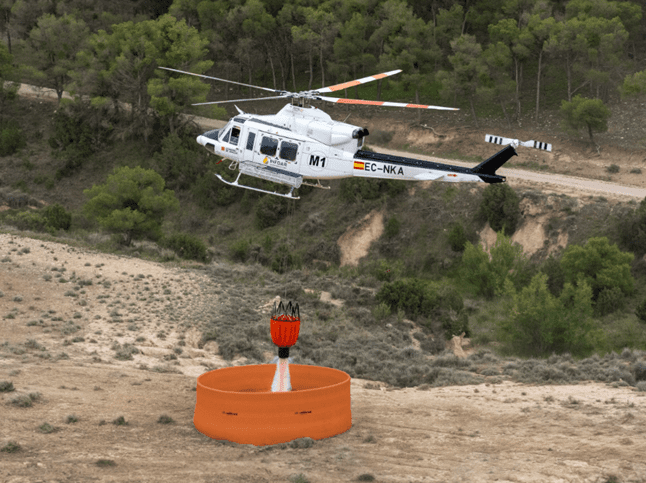(The Guardian/Gary Alcorn): The Hazelwood coalmine fire was entirely foreseeable, could have been put out more quickly and its impact greatly reduced if the operator GDF Suez had not taken a “minimal compliance” attitude towards fire risk, the Hazelwood Mine Fire inquiry has found.
The inquiry’s 434-page report, tabled in the Victorian parliament on Tuesday, said GDF Suez did not plan for possible fire in the worked-out areas of the Hazelwood coal mine, 150km east of Melbourne. The fire began on 9 February and burned for 45 days, blanketing the nearby town of Morwell with ash, smoke and, at times, toxic carbon monoxide.
The report was critical of several aspects of the handling of the disaster, which it said had cost the Victorian government, the company and the community more than $100m. However, it was especially critical of the company.
“The board is concerned that GDF Suez considered it sufficient to implement fire protection measures that only met the minimum requirement. There is conflicting evidence whether GDF Suez met this minimum requirement,” the report says.
“GDF Suez did not adequately recognise a fire caused by ember attack on the worked-out areas of the Hazelwood mine as a mining hazard. GDF Suez failed to identify potential risk to the health and safety of firefighters and the residents of neighbouring communities. All of these factors were foreseeable if not foreseen.”
The company characterised the fire, the worst in an open cut coalmine in Victoria’s history, as a “perfect storm” of events and not foreseeable. The Victorian government had also indicated that the fire was impossible to foresee.
The report said that there had been numerous fires previously in worked-out areas of the mine, including in 2005 and 2008. It was well known that brown coal was highly combustible and hard to extinguish. And it was known that the northern batters of the mine were only a few hundred metres away from Morwell’s south side.
“The board accepts counsel assisting’s submission that the Hazelwood mine fire was an entirely foreseeable event and one that should have been planned for.”
“GDF Suez did not conduct a risk assessment in relation to the risk of a fire in the worked-out areas of the mine, despite a recommendation to do so following a fire in the worked-out areas in September 2008,” the report said. In that respect, it fell short of its obligations under occupational health and safety laws.
“The inability of GDF Suez to effectively suppress the Hazelwood mine fire during the initial stages was due in large part to the mine operator being inadequately prepared to manage the fire.”
In the 1990s, the Victorian government privatised the power industry and power stations were sold to overseas interests. The Hazelwood mine is owned by the Hazelwood Power Partnership and is run by a company more than 72% owned by French firm GDF Suez SA and Mitsui & Co Ltd, a Japanese company. The mine and the Hazelwood power station provide 25% of Victoria’s baseline electricity supplies.
The best way to reduce the risk of ember attack in a worked area of the mine was through wetting down coalfaces or covering exposed coal with retardants such as clay, the report said. This was not done.
As well, the company removed degraded or leaking pipework between 1996 and 2007 and this had not been replaced, meaning there was not adequate water available to fight the fire in its early stages.
“The only reason provided for failing to do so was that ‘they didn’t’ need to be’, in according with the (fire) policy.” This indicated a risk-management culture of “minimal compliance” rather than one of “best practice”, the report said. The suppression of the fires in the mine in the early stages was “severely hampered” by the limited water supply and the lack of sprinklers.
All but one of the company’s personnel nominated as an emergency commander under the emergency response plan was away from Morwell for the weekend or on vacation.
And it took more than an hour before the company activated its emergency response after the fire was reported. Nobody called triple-zero and no request was made for Country Fire Association resources for several hours.
The report said the community had experienced “significant adverse health effects and may be affected for an indeterminate period into the future”. There were also significant financial impacts, including medical costs, business losses, relocation, cleaning and possible reduction in the value of houses.
The Victorian government has announced a long-term health study into the fire’s impact and the report recommended that this should be extended to last for at least 20 years, rather than the proposed 10.
Those with existing cardiovascular and respiratory conditions were “particularly susceptible” to potential adverse long-term health impacts. The Latrobe Valley was already one of the most disadvantaged communities in Australia and consideration should be given to creating a “health conservation zone” to try to improve the health of the residents.
The community’s complaints of poor co-ordination and communication were vindicated by the report. Advice was “generic and repetitive” and “communication did not reach many people in a timely way and in some cases, not at all, by the intended recipients … empathy was also often lacking, particularly from some government spokespeople”.
During the fire, pollutants from the fire included carbon monoxide and particulate matter, which is a mixture of very small particles and liquid droplets known to cause adverse health effects, particularly PM2.5, which means the fine particles are equal or smaller than 2.5 micrometres in diameter.
The reading of PM2.5 on 16 February was 28 times the advisory standard. Readings show carbon monoxide was “significantly elevated” at times during the fire.
The advice from the chief health officer, Rosemary Lester, on 28 February for vulnerable groups such as pregnant women, the elderly and children who lived south of Commercial Road to relocate “was provided too late”, the report found.
It was also “poorly explained and perceived by the community as arbitrary and divisive”. However, the report concluded that there was no need for a total evacuation of the town.
After the report’s release, Teague said it was not up to the inquiry to apportion blame. “The way of having that assessed is by legal action.” There is discussion of a possible class action by residents and businesses impacted by the fire.
Teague said both the state government and the company had been “extraordinarily proactive” and had not waited until the report’s release to make improvements. The government had already made 40 commitments and the company 17, including reviewing fire risk in the worked-out areas.
Asked whether the fire had been preventable, inquiry member John Catford said it was clear that measures should have been taken that were not taken.
“Whether those measures could have avoided a fire taking hold in the mine is uncertain. But certainly it would have mitigated it.”
The report made 18 recommendations, including that the auditor general or a similar body report every year for the next three years on progress made in implementing recommendations; improved co-ordination between services for future fires, improved monitoring of air conditions; and that Victoria pushes for a national compliance standard for PM2.5. It also recommended that GDF Suez undertake a risk assessment of the likelihood and consequences of a fire and the most effective protection for exposed coal surfaces.
GDF Suez Australian Energy’s group manager corporate affairs Jim Kouts welcomed the report and said the company was already implementing some of its recommendations. In a statement, Kouts said the company was improving communications and training for personnel and contractors and undertaking a vegetation removal program in worked out areas of the mine.
“Hazelwood is a key part of the state’s electricity supply infrastructure and in turn our business is a major contributor to the Latrobe Valley community. Consideration of the report’s recommendations will aid preparations for and response to any future fire risk,” Kouts said.
Deputy premier Peter Ryan noted that 12 of the 18 recommendations applied to the government. He said the government supported 11 in full, and the other in principle.
That recommendation was that the state equip itself to undertake rapid air quality monitoring anywhere in Victoria so would be available within 24 hours of an incident. Ryan said this was supported in principle but the government needed to see how it could be implemented.
“The region has been through a terrible time and we are now working with the community and the Latrobe City Council on recovery issues and projects which will further “assist in the recovery of the local economy and ensure it is strengthened.”
The community of Morwell had “mixed feelings” about the report, said the president of Voices of the Valley, Wendy Farmer.
“In the recommendations it doesn’t blame GDF Suez at all, but it does in the report – it makes them responsible. I think the community wanted someone to blame and they’ve now got someone to blame and I think [law firm] Maurice Blackburn will be excited about that,” said Farmer.
“The recommendations are quite weak in a lot of areas. It was disappointing regarding mine remediation. Clearly the disused part of the mine where there are uncovered coal faces need to be properly rehabilitated to ensure these areas don’t pose a fire risk again. We want to see a clear timeline and goals for this process and believe it should be commenced as soon as possible.”









